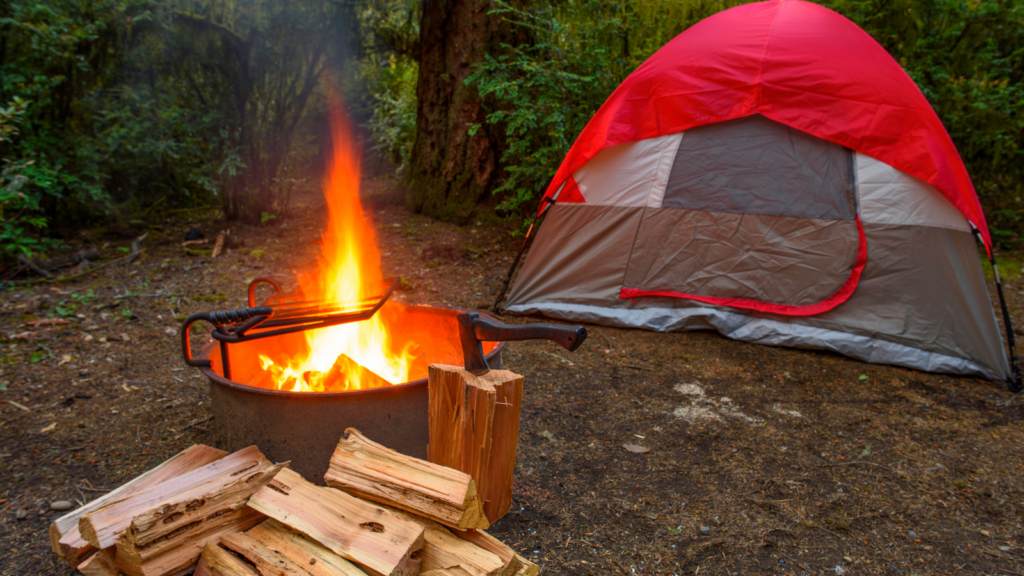When it comes to survival, there’s nothing quite as essential as shelter. But not just any shelter will do. For long-term survival, it’s crucial to have a shelter that’s not only sturdy and protective but also equipped with a fireplace for warmth and cooking.
Long Term Survival Shelter with Fireplace
A well-built long term survival shelter with fireplace offers not just warmth, but a myriad of other practical and emotional benefits. Let’s delve into the specifics under the following subheadings.
Efficient Heating

A fireplace provides direct, radiant heat in a survival shelter. Unlike modern heating systems, it does not rely on electricity, making it dependable even when external power sources fail. Its heat generation process, burning wood or charcoal, transforms almost 70% of the compound’s energy into useful warmth. In addition, with appropriate flue design, harmful gases get released outside while the heat remains inside, demonstrating both safety and efficiency.
Cooking Capabilities
The fireplace in a survival shelter doubles as a cooking station. Cooking over a fire gives one full control of the heat, leading to meal options from roasted meat to simmered vegetable soup. The flat, sturdy hearth serves as a generous surface for preparing meals, brewing hot drinks, or boiling water. Also, no power outage or disruption in supplies can limit the ability to prepare warm and nutritious food.
Key Features of an Effective Long-Term Survival Shelter
Essential to the overall functionality of a long-term survival shelter, certain key aspects can significantly impact its efficacy. The features span insulation and ventilation, durability and security, and considerate space layout.
Insulation and Ventilation

An effective long-term survival shelter must excel in providing top-tier insulation and ventilation. Insulation reduces the rate at which heat leaves or enters the shelter.
In contrast, proper ventilation helps refresh the air inside the shelter, crucial when the fireplace is continually burning. It mitigates the risk of carbon monoxide build-up, presenting a healthier living environment.
Durability and Security
High on the list of effective shelter features lie durability and security. Durability refers to the shelter’s resilience against elements like rain, snow, wind, and potential wildlife damage. Using materials like concrete, steel rods, and pressure-treated wood increases durability.
Security, on the other hand, pertains to the shelter’s ability to provide safe refuge from potential threats. One notable example is a secure door that cannot be easily broken down by predators or unexpected human threats.
Considerations When Installing a Fireplace
Beyond the comforting appeal of a crackling fire in a survival shelter, the practical benefits include a reliable heat source and a means to cook. However, selecting and installing a fireplace can be complex. It’s crucial to consider a variety of factors, including the type of fireplace, safety measures, and ongoing maintenance requirements.
Choosing the Right Type of Fireplace
From wood-burning to gas and electric fireplaces, each type comes with its pros and cons, especially in a survival shelter scenario. Wood-burning fireplaces, for example, offer authenticity and ample heat, but they also demand substantial fuel supplies.
Safety Measures

Implementing safety measures is paramount when installing a fireplace in a survival shelter. For starters, ensure adequate ventilation to avoid potential monotonic poisoning. Additionally, maintain a safe distance between the fireplace and other flammable materials to prevent accidental fires.
Regular cleaning and inspection of the fireplace and chimney, along with proper maintenance of the fire extinguishing equipment, are also crucial.
Maintenance Requirements
A reliable fireplace is a significant part of a survival shelter. Maintaining it can be a drawn-out affair but necessary. Regular cleaning of the flue to prevent soot and creosote build-up, yearly inspections to assess structural integrity, consistent checking for any leaks or cracks, and timely repairs are part of the overall maintenance considerations. Simple practices like using dry, seasoned wood can also contribute to making your fireplace last longer while keeping it efficient.
Safe Haven in a Smart Shelter
Having a long term survival shelter with fireplace isn’t just about comfort, it’s a necessity. It provides essential warmth and cooking capabilities, but it’s vital to ensure safety measures are in place. So, when planning your survival shelter, make sure you’re well-informed and prepared. After all, survival isn’t just about enduring, it’s about living safely and comfortably, even in the toughest conditions.

